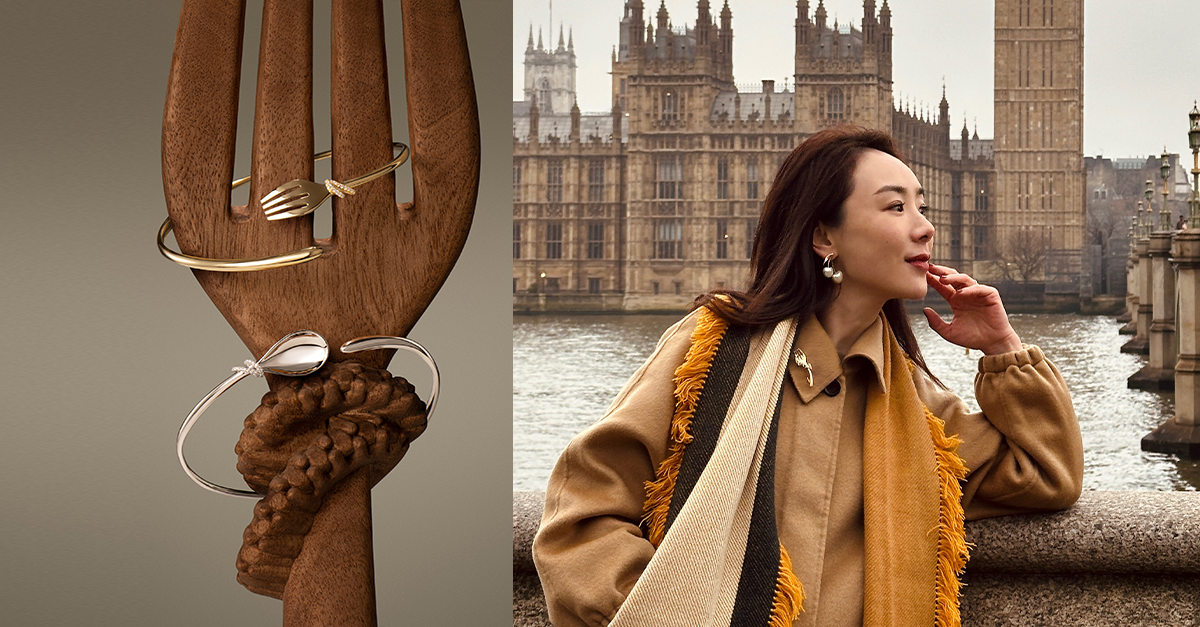Amid mounting pressure across the broader luxury industry, the high jewelry segment has stood out with remarkable resilience.
In China market, leading high jewelry brands have been actively stepping up their presence. When surveying major luxury jewelry houses in recent years, a refreshing Eastern-inspired aesthetic has emerged, spanning from design to symbolic meaning.
Qeelin which is rooted in the spirit of Eastern culture continues to make significant strides—earning recognition from both the market and its clientele.
Whether it is the deep appreciation Chinese consumers have for their culture, their desire for brand differentiation, or the evident demand for high jewelry among ultra-high-net-worth individuals, it is clear that Qeelin’s focused push into this category has arrived at a most opportune time.
.jpg)
This marks the third consecutive year that Qeelin has hosted a high jewelry exhibition in the Chinese Mainland. Recently, Qeelin held its 2025 High Jewelry Private Exhibition at a historic heritage site within the Amanyangyun resort in Shanghai. Clients snapped up several high jewelry pieces on the very night of the event.
Luxe.CO explored the exhibition in depth and spoke with Qeelin CEO Christophe Artaux on-site. This article analyzes the unique competitive strengths of Qeelin’s high jewelry offerings and how the brand is carving out its own space in the market.
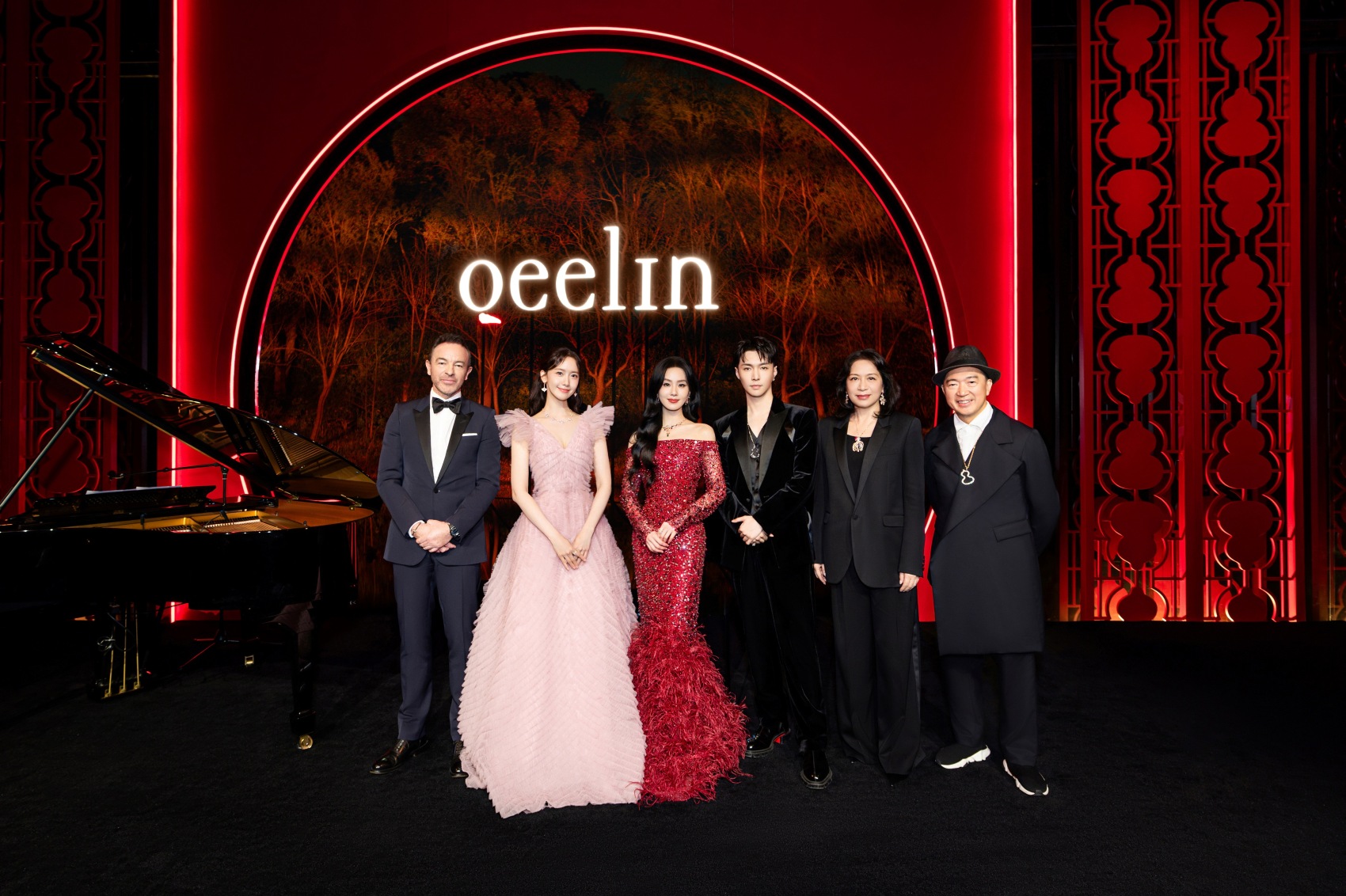
Above:Qeelin CEO Christophe Artaux, global brand ambassadors Lin Yuner, Liu Shishi, and Zhang Yixing, Kering Group Greater China President Cai Jinqing, alongside Qeelin founder and creative director Dennis Chan, jointly attended the Qeelin 2025 High Jewelry Private Exhibition.
I.Rare Eastern Presence in High Jewelry
High jewelry, a category concept rooted in the West, reveals a largely untapped space when integrated with a Chinese cultural backdrop.
The intrinsic structure of Chinese culture differs fundamentally from that of the West.
During the exhibition, Christophe Artaux shared with Luxe.CO, “Qeelin finds itself at a crossroads, straddling two spheres—Western brands on one side and Asian, particularly Chinese brands, on the other. The latter often emphasize traditional values, prioritizing 24K gold and investment potential. In the middle of these two extremes lies a largely untapped high jewelry category, which I believe presents a significant business opportunity for us.”
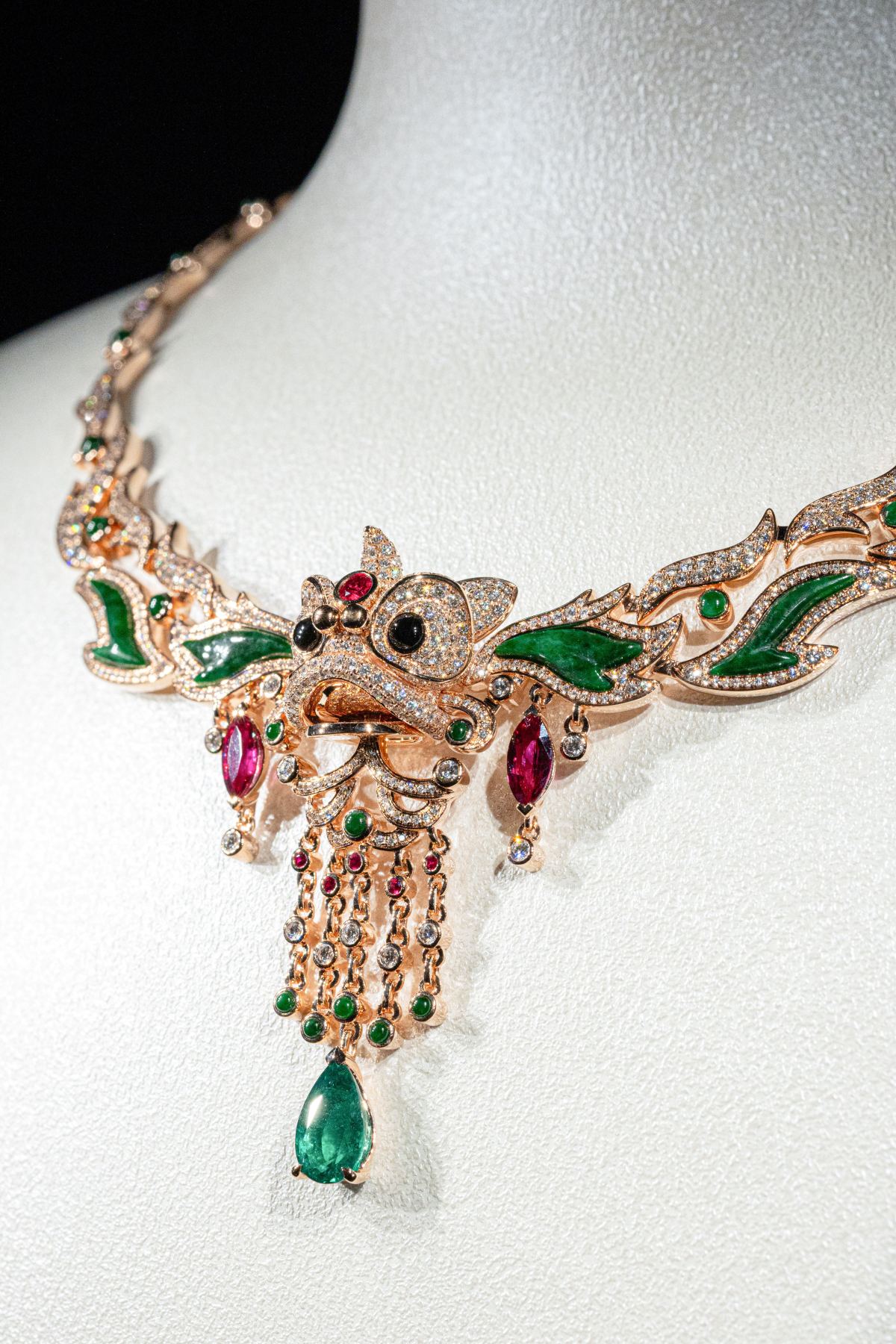
Above:Inspired by the lion dance, the Xi Xi high jewelry collection includes movable lion mouths that add a playful and agile touch. In Chinese, the lion dance sounds like “no trouble,” representing peace and wellness, and is considered a strong protective symbol.
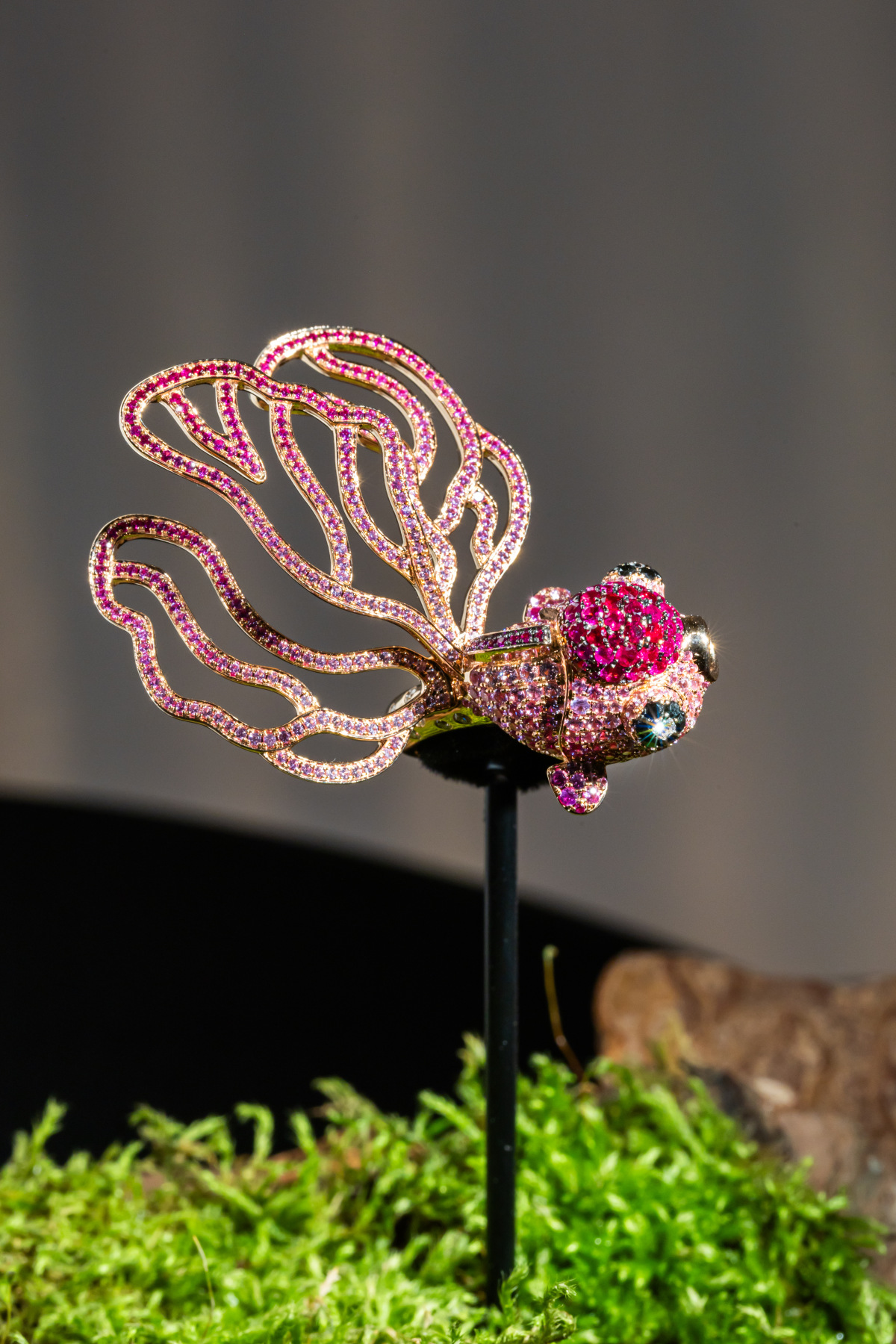
Drawing inspiration from goldfish, the Qin Qin collection showcases openwork tails that echo the artistry of traditional Chinese paper-cutting. In Chinese culture, goldfish, meaning “abundant gold, ” symbolize wealth and prosperity surplus.
As described in classical Chinese poetry—”Emerald phoenix hairpins dangle and sway, golden ornaments glitter in floral trays”—adornments and jewelry in traditional Chinese culture reflect unique modes of emotional expression and a refined sense of living.
Jewelry in China has never been merely decorative. It also serves cultural functions such as symbolizing ritual and hierarchy, distinguishing social status, or conveying sentiment and blessings. For instance:
In the Tang Dynasty, noblewomen followed the custom of wearing “lotus crowns.” These elaborate headpieces, shaped like blooming lotus petals, embodied reverence for Buddhist teachings.
These ornaments serve as crucial vessels of Chinese cultural heritage and also embody a unique value system.
While time and societal changes have led to some traditions fading or becoming fragmented, we are inherently influenced by them. This gives rise to an innate affinity for Eastern aesthetics and traditional culture symbols.
Qeelin’s popularity stems from a strong cultural recognition among Chinese consumers, who share an understanding of significance and symbolism. This resonance speaks for itself and requires no further explanations.
Christophe Artaux expressed, “Cultural relevance holds great significance. Our clients forge a strong bond with our high jewelry. Our designs serve as narratives or symbols that resonate with them—they help people reconnect with cultural events. This connection is profoundly meaningful. ” emotional.”
II. What Makes Qeelin’s High Jewelry Unique?
During this exhibition, Qeelin showcased a broader selection of gemstones; however, it was their unique approach to gemstone application and design that distinguished the brand from typical high jewelry brands.
The highlight of the show was undoubtedly Qeelin’s newly launched collection: Wulu Yulin High Jewelry, which draws inspiration from the murals of the Yulin Grottoes in Gansu—a cultural treasure that remains a less well-known site.
The Yulin Grottoes, known as a sister site to the renowned Mogao Caves, reflect the blend of Eastern and Western cultures, highlighting the exceptional artistry and innovation of ancient creators. Christophe Artaux notes that the latest collection is inspired by the vivid colors found in the Yulin murals and incorporates designs made with rubies and pink sapphires.

Above: Qeelin Wulu Yulin high jewelry collection
Reviving and resonating with cultural memory requires fresh perspectives and innovative approaches to ensure its ongoing relevance and evolution. Qeelin’s deep mastery of Chinese aesthetics has attracted the attention of affluent clients. The brand draws design inspiration from its cultural heritage, including the Dunhuang murals, as well as from nature, with motifs like bamboo and lotus flowers, along with auspicious mythical beings such as dragons, phoenixes, and lion dancers.
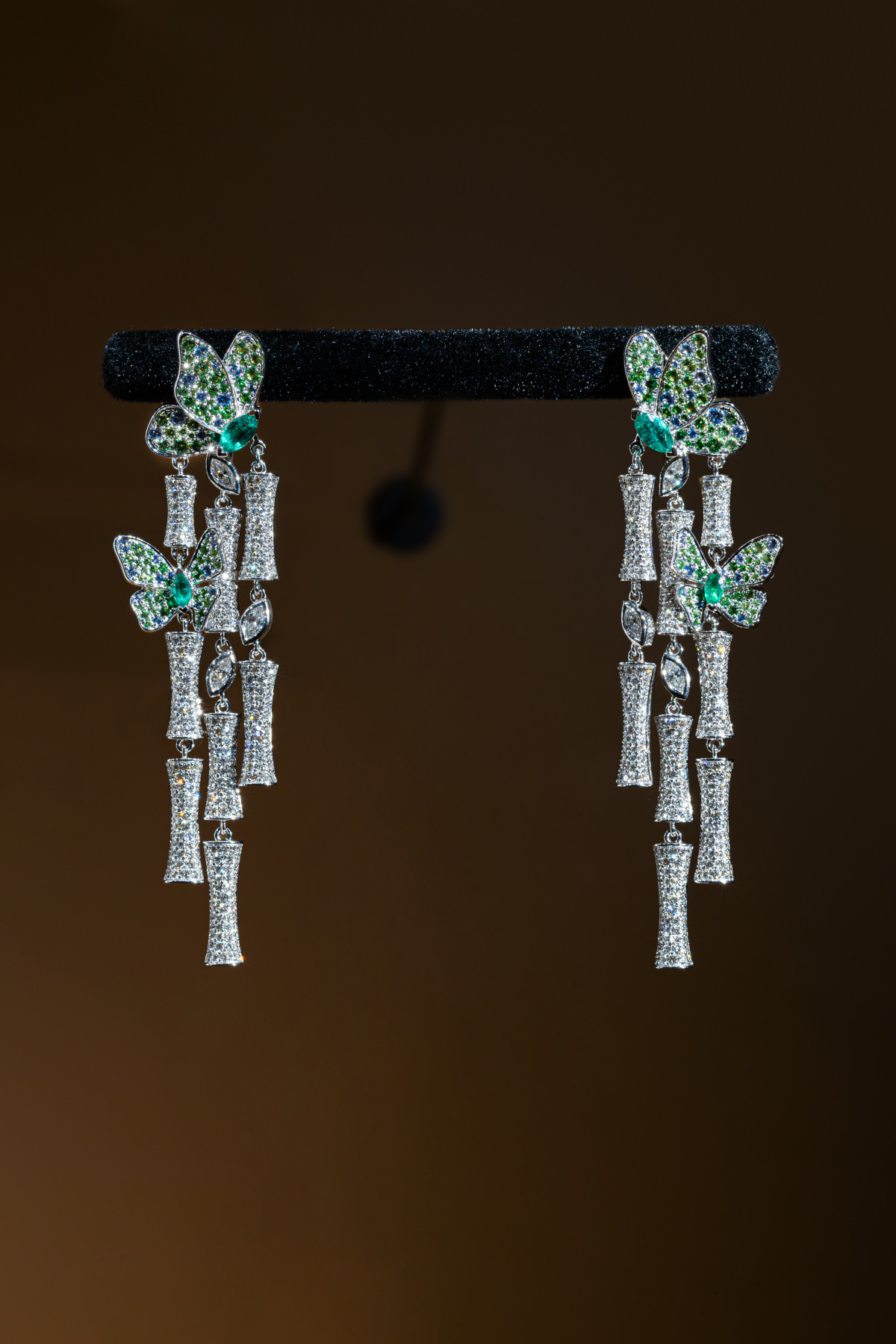
Above: Qeelin Bamboo high jewelry collection
Christophe Artaux told Luxe.CO that he gathered substantial positive feedback from clients at the exhibition: “Our VICs were delighted by the designs, which provided us with great encouragement.”
At the venue, the reporter saw the Wulu Fairy High Jewelry Collection, which is also inspired by Dunhuang. This collection emulates the elegant, soaring poses of the flying Apsaras depicted in the murals, blending them with the gentle contours of the gourd shape to form an abstract silhouette. The gourd’s symbolic meaning, “blessings and prosperity,” is subtly embedded in the design design.

Above: Qeelin Wulu Yulin high jewelry collection
The newly launched Wulu Diamond Lotus High Jewelry Collection incorporates the lotus flower motif for the first time and highlights Qeelin’s unique gourd-shaped diamond cut, a result of a decade of innovation. The lotus, emerging unsullied from muddy waters, serves as a sacred symbol in Buddhism and embodies purity and transcendence in Chinese philosophy.
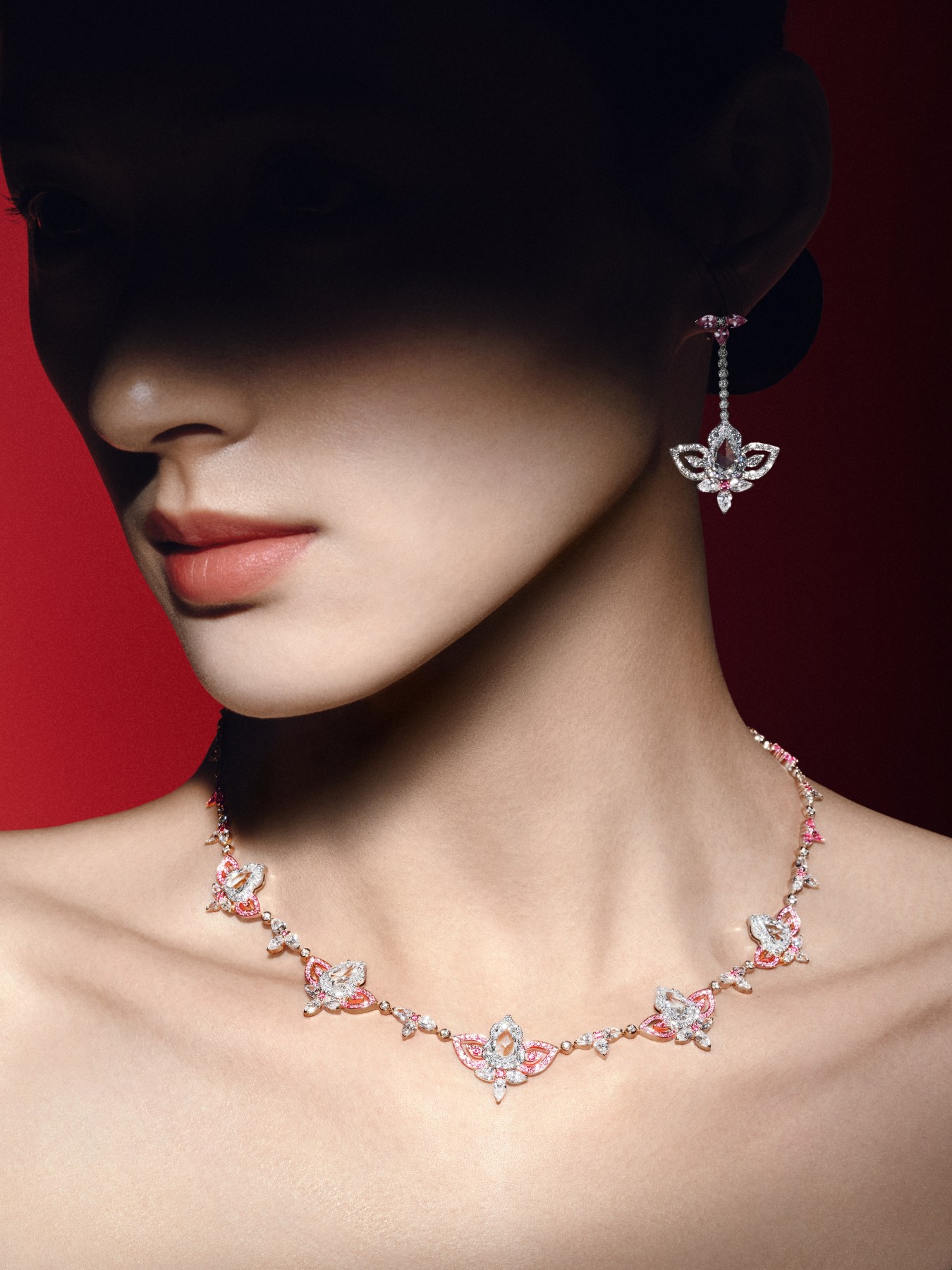
Above: Qeelin Wulu Diamond Lotus High Jewelry Collection
The Wulu Shanshui High Jewelry Collection draws inspiration from traditional Chinese landscape painting, utilizing the poetic imagery found in ink wash art as a foundation for its design. This collection honors the age-old Chinese technique of openwork, capturing the aesthetic principle of “leaving space” within its creations. Emeralds are expertly cut to resemble bamboo leaves, while oval emeralds mimic the appearance of pine branches—together forming a miniature landscape that embodies the philosophical concept of “one flower, one world; one tree, one bodhi.”
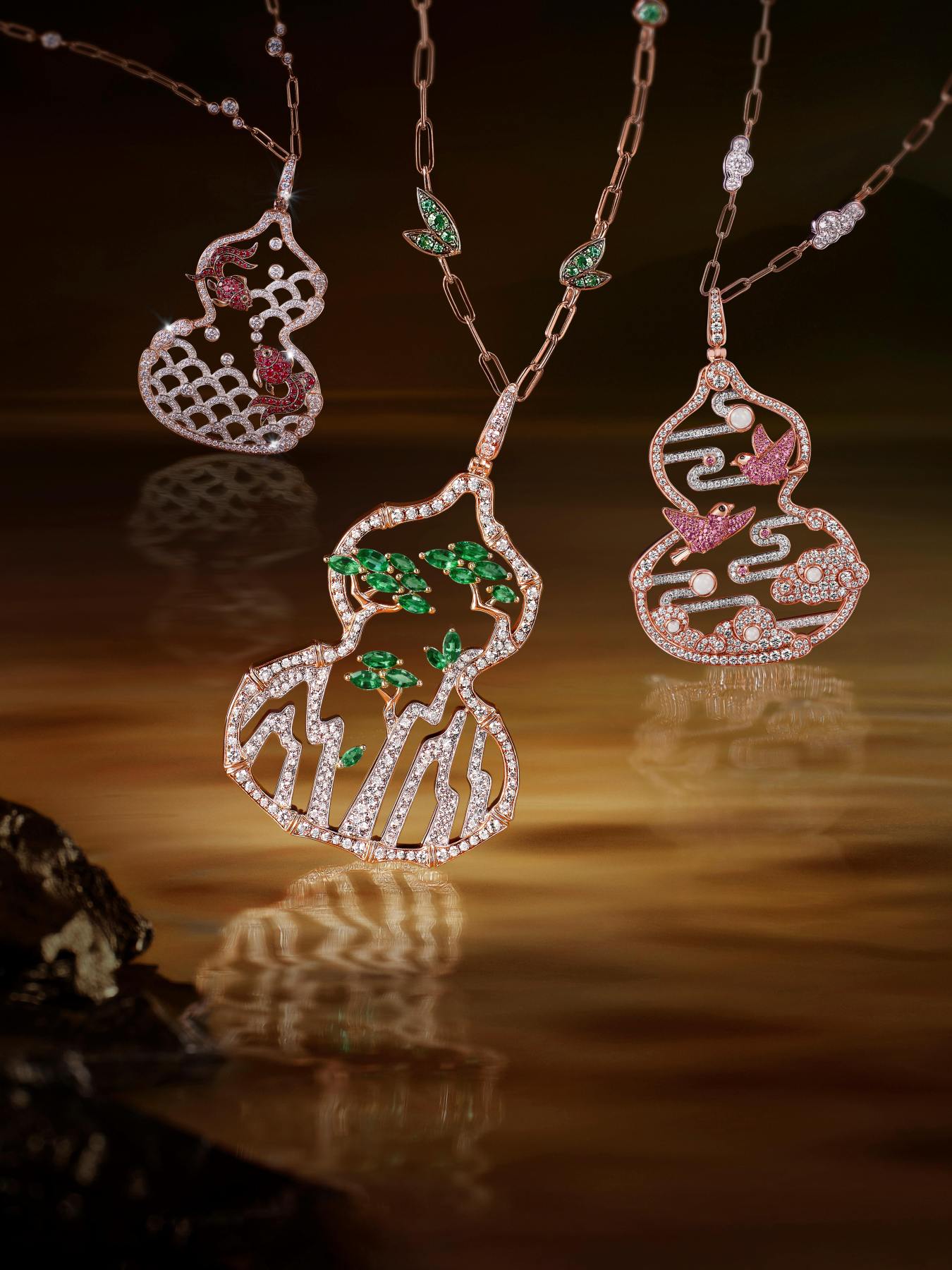
Above:Qeelin Wulu Shanshui High Jewelry Collection
III. Christophe Artaux: “We Are Not Creating Jewelry for Collectors”
In contrast to the large, intricate, and heavy pieces from other high jewelry brands, Qeelin’s high jewelry is distinguished by its lightweight, subtle, and wearable attributes—a design philosophy that aligns well with the everyday requirements of Chinese individual consumers.
When asked about this approach, Christophe Artaux told Luxe.CO:
“When we talk about luxury brands—particularly in the valuable high jewelry sector—while intergenerational inheritance is an important aspect, it’s not our primary focus. We aren’t designing jewelry solely for collectors,” he clarified. “When Dennis creates these pieces, he wants women to enjoy wearing them as much as possible. Maybe not every day, but certainly more often than just once a year. Our pieces embody a sense of playfulness—the Bo Bo collection, showcasing a panda motif, exemplifies this spirit.”
In an intensely competitive, multi-brand market, the uniqueness and exclusivity of brand DNA and product design are crucial to long-term desirability.
Qeelin’s brand identity, deeply influenced by Eastern culture, sets it apart in the high jewelry market. Its design focus on lighter, more day-to-day wearable pieces also signifies a potentially successful subcategory within the high jewelry sector industry.
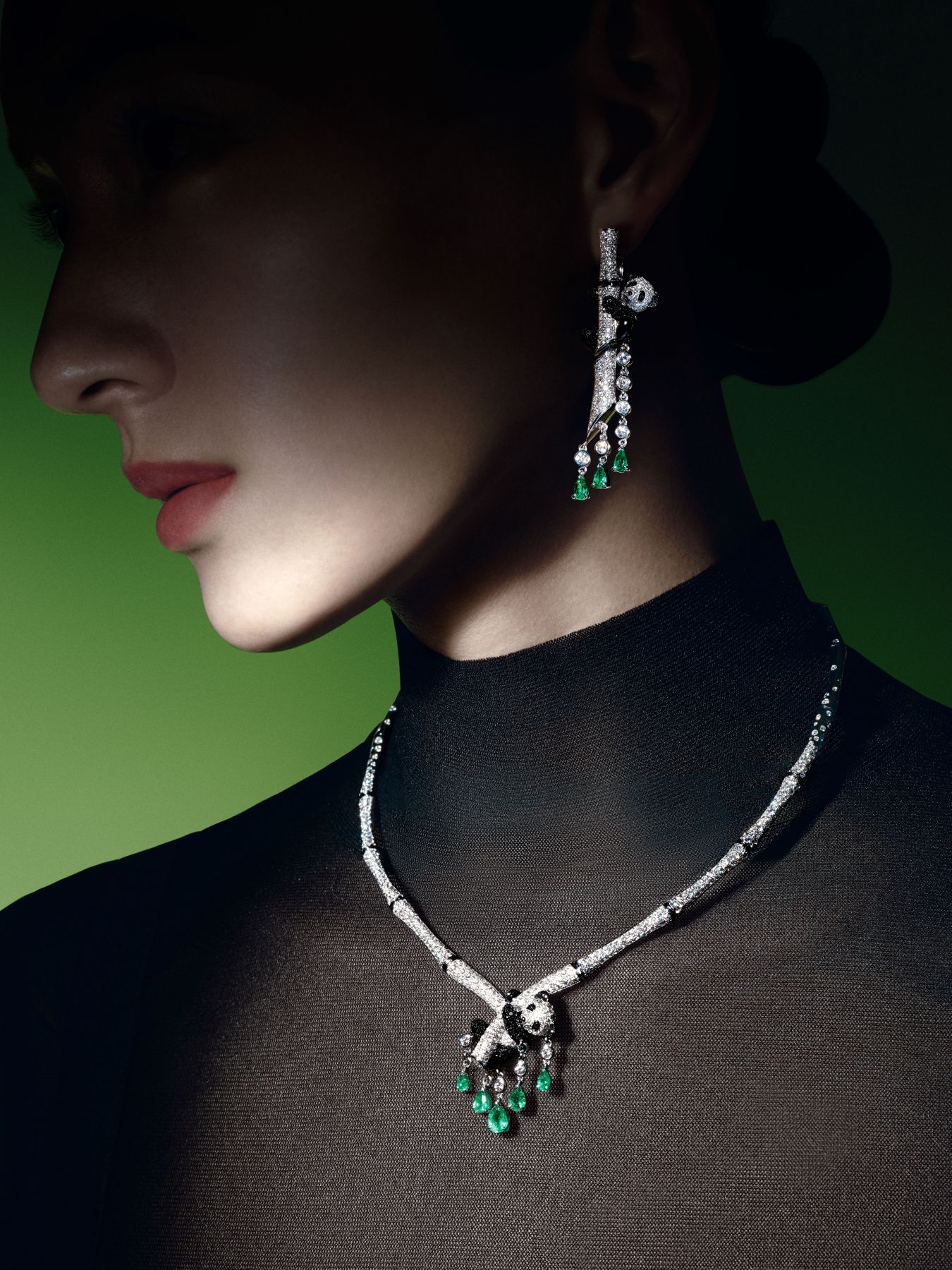

Above: Qeelin Bamboo Bo Bo High Jewelry Collection
According to the latest annual global luxury market report by Bain & Company, jewelry was the most resilient core luxury category in 2024, with sales growing approximately 0% to 2% year-on-year to reach €31 billion. High jewelry significantly outperformed regular jewelry within this growth.
Artaux observed that jewelry brands across the industry are increasingly emphasizing the strategic importance of the high jewelry segment.
“There are cycles in the industry, and the current market context is perhaps more complex than before. Competition is becoming fiercer, and in this new environment, it’s essential to strike a balance between acquiring new customers and encouraging repeat purchases from existing ones. Prioritizing repurchase and engaging with high-income clients is an opportunity.”
Artaux expressed his strong belief in the potential of the high jewelry segment: “High jewelry is an area we are absolutely committed to investing in… It enables us to create more private moments and deepen engagement with our clients.”
At the same time, he emphasized that Qeelin’s brand-building strategy centers on “storytelling” and that high jewelry gives the brand more opportunities to tell its story.
From the artistic reinterpretation of the iconic Wulu collection to the ongoing exploration of Dunhuang and the modern expression of traditional Chinese elements, these exceptional pieces not only enhance Qeelin’s brand story but also bolster recognition among affluent clientele.
.jpg)
.jpg)
Above: The Qeelin High Jewelry Private Exhibition
IV. Rooted in China, Radiating Eastern Culture to the World
Through both its jewelry creations and a series of cultural and artistic initiatives, Qeelin continues to explore the beauty of the Chinese landscape, showcasing the profound heritage and unique charm of Eastern culture.
Qeelin has established a long-term partnership with both the China Dunhuang Grottoes Conservation Research Foundation and the Dunhuang Academy, pledging sustained support for the “Research Project on Sui and Tang Dynasty Accessories in the Dunhuang Grottoes.” Additionally, the brand has also ventured into the Qiandongnan region in Guizhou to uncover the hidden cultural heritage of the Dong ethnic group and has traveled to Yangshuo in Guilin to document the local folk tradition of the “Golden Dragon Parade” along the Yulong River.

Above:Early this year, Qeelin partnered with its global brand ambassador Zhang Yixing to venture into the Dong ethnic villages of Southeast Guizhou for the filming of its Lunar New Year campaign.
Artaux explained, “We’ve been very focused. You can’t do twenty things in your life, you can only do two or three things well. So let’s focus on it and do it well.”
Since its founding 21 years ago, Qeelin has remained true to its brand DNA, established its own design language, and remained committed to a focused development path.
In conversations with Christophe Artaux, he consistently emphasized the importance of focus. This can be summarized as follows: Qeelin originated in China, maintains its headquarters there, is committed to discovering and embodying the essence of Eastern spirit, and prioritizes investments within China market.
Christophe Artaux expressed, “Our efforts extend well beyond business development. I often describe this as a beautiful mission—sharing the narrative of a Chinese brand and supporting Qeelin’s evolution into a luxury brand. On a personal level, I’ve enjoyed a rich life experience in a beautiful country.”
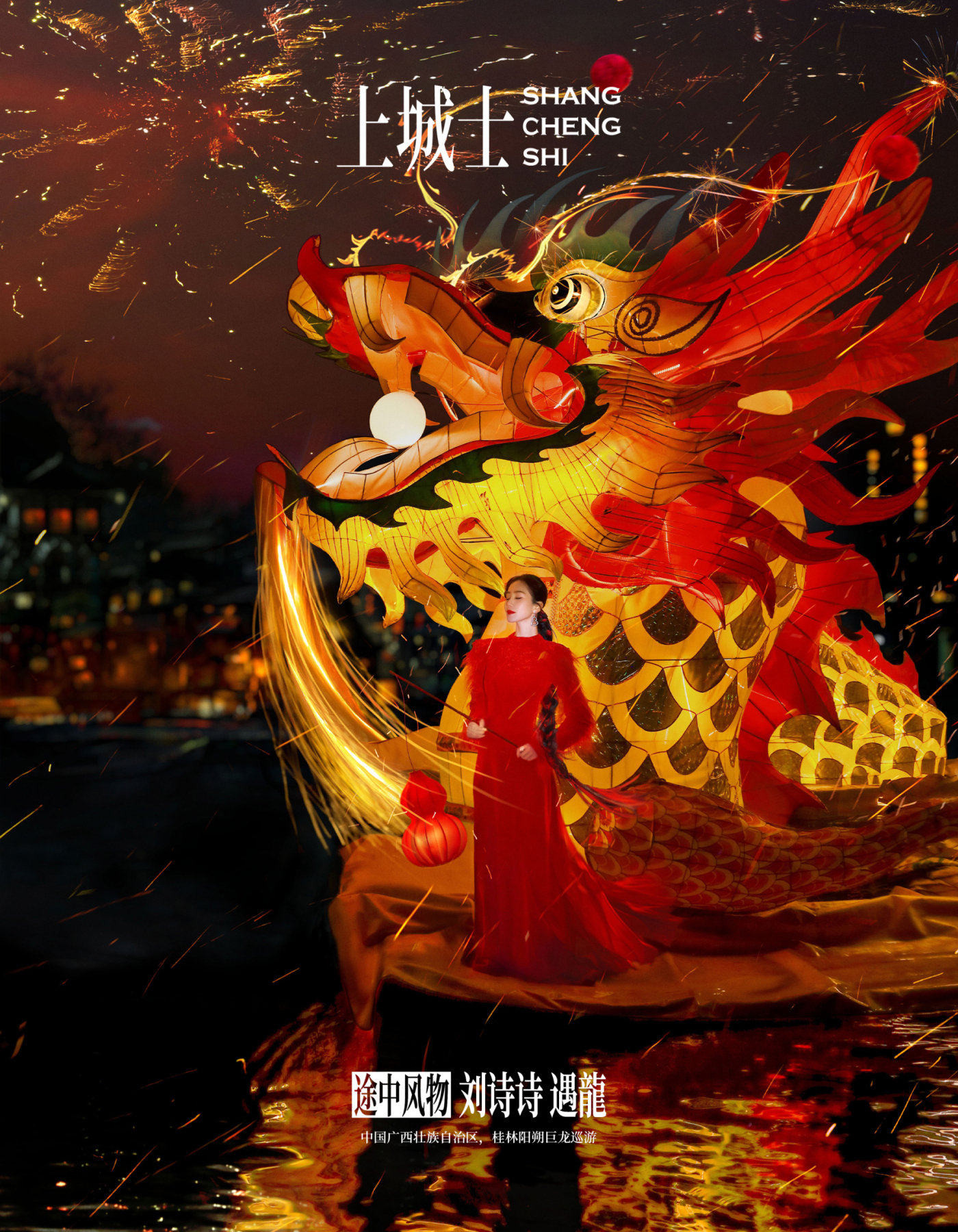
Above: Liu Shishi, global brand ambassador for Qeelin, featured in the Qeelin “Golden Dragon Parade” New Year greeting film, Image Source: Shangchengshi
Reflecting on the changes over the past decade, Artaux noted that when he first came to China around ten years ago, Chinese brands had a relatively quiet presence in industries like luxury. But now, the landscape has changed dramatically. “The luxury industry is still often associated with the Western world, but I don’t believe that’s right. Today, we are seeing a shift—many Chinese brands are emerging and proving that they can excel in many different fields.”
The vision of Qeelin’s founder, Dennis Chan, has always been to share Chinese culture and symbolism with the world. Artaux mentioned, “I believe this vision will come to fruition in the future, and we need to be ready for it… I hope we can be among the brands that contribute to this cause. ”
While the inspirations and symbols of Qeelin’s designs resonate deeply with Chinese consumers, they offer global audiences a vibrant, philosophical, and refreshing insight into Eastern aesthetics.
Qeelin aims to grow its international presence by opening flagship stores and pursuing other strategic initiatives. “We’ve made progress in several markets, particularly in Asia and North America,” stated Artaux. “The results in Japan and South Korea have also been very encouraging.”
Last year, Qeelin launched its flagship store in Ginza, Tokyo, and Artaux announced the impending opening of the brand’s third store in Seoul. He highlighted that South Korea is the top market for the brand’s investment outside of China. In addition, he stressed that Qeelin’s international expansion will be methodical and steady, expressing satisfaction with the brand’s development trajectory both in China and internationally.

Above:Qeelin flagship store in Ginza, Tokyo
| Image Credit: Qeelin, Shangchengshi
丨Editor: Elisa



